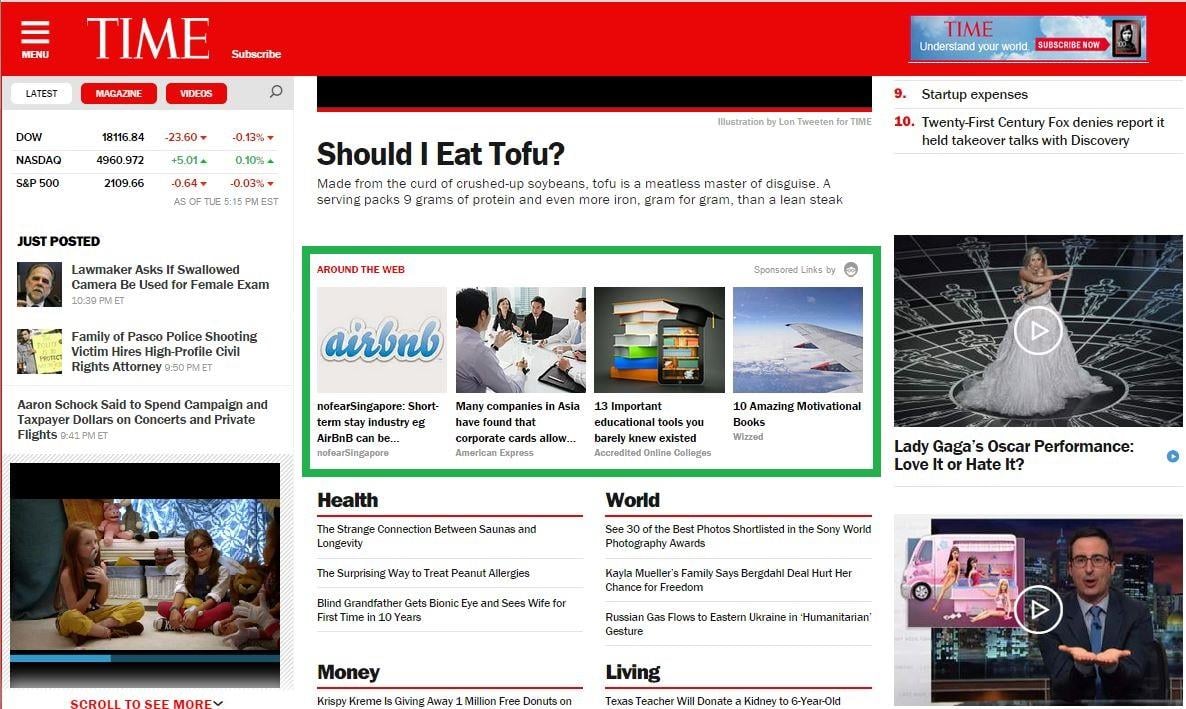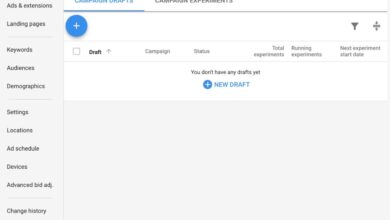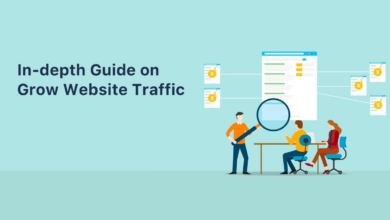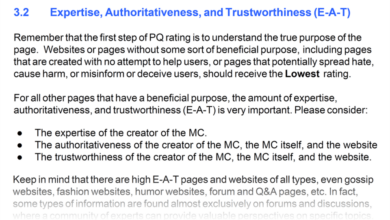
AdWords vs AdSense Questions Answered
AdWords vs AdSense questions answered. This deep dive explores the nuances of these two powerful advertising platforms, revealing their unique strengths and weaknesses. We’ll uncover the core differences between AdWords and AdSense, examining their functionalities, target audiences, and revenue models. A comparative table will visually illustrate the key distinctions, providing a clear picture of each platform’s role in the online advertising ecosystem.
From the historical context of online advertising to practical strategies for campaign management and optimization, this comprehensive guide covers everything you need to know. We’ll explore the process of creating and managing AdWords campaigns, as well as implementing and optimizing AdSense placements. Learn how to integrate these platforms effectively to maximize your marketing impact, and discover the factors to consider when choosing the right platform for your specific needs.
Finally, we’ll tackle common pitfalls and troubleshooting techniques to ensure a smooth experience with both AdWords and AdSense.
Introduction to AdWords and AdSense

AdWords and AdSense are two cornerstones of the online advertising ecosystem, empowering businesses and website owners to connect and monetize their content. AdWords, a platform owned by Google, allows businesses to display their advertisements on Google’s vast network, reaching targeted audiences. AdSense, also a Google service, enables website owners to earn revenue by displaying ads on their sites.
Understanding these platforms and their historical development is crucial to grasping the fundamentals of online advertising.The evolution of online advertising has been closely tied to the growth of the internet itself. Early online advertising was often rudimentary and lacked the targeting capabilities we see today. AdWords and AdSense emerged as sophisticated tools to address these shortcomings, allowing for more precise ad placement and targeted marketing.
Their rise reflects the increasing sophistication and reach of the internet, as well as the growing demand for effective advertising methods in the digital age.
AdWords: The Advertiser’s Tool
AdWords serves as a powerful platform for businesses to reach their target customers through a variety of advertising methods. Advertisers create ads with specific s, which are then matched to relevant searches on Google. This allows for precise targeting, ensuring that ads are displayed to users actively interested in the advertised products or services. The system is designed for pay-per-click (PPC) advertising, where advertisers only pay when a user clicks on their ad.
This efficiency model minimizes wasted ad spend and encourages relevant engagement.
AdSense: The Publisher’s Revenue Stream
AdSense provides a straightforward way for website owners and publishers to monetize their content. By integrating AdSense code onto their sites, publishers allow Google to display relevant ads to their visitors. This integration doesn’t require extensive technical expertise, allowing website owners to generate revenue with minimal effort. The revenue model is based on impressions and clicks, incentivizing publishers to maintain high-quality content that attracts and engages their audience.
AdSense operates on a transparent revenue-sharing model, where a portion of the ad revenue generated is distributed to the publisher.
Comparison of AdWords and AdSense
| Feature | AdWords | AdSense | Comparison |
|---|---|---|---|
| Purpose | To display advertisements to targeted audiences. | To allow website owners to display advertisements and earn revenue. | AdWords focuses on advertising, while AdSense focuses on monetizing content. |
| User Role | Advertiser, marketer | Website owner, publisher | AdWords is for businesses wanting to advertise, while AdSense is for website owners seeking revenue. |
| Revenue Model | Pay-per-click (PPC) | Revenue sharing based on impressions and clicks | Advertisers pay for clicks, while publishers earn a portion of the ad revenue. |
Core Differences between AdWords and AdSense: Adwords Vs Adsense Questions Answered

AdWords and AdSense, both offered by Google, are crucial tools in the digital marketing landscape. While both platforms revolve around online advertising, they cater to different needs and user types. Understanding their core differences is vital for anyone looking to leverage the power of online advertising effectively.AdWords is a platform for advertisers seeking to promote their products or services through targeted online campaigns.
AdSense, on the other hand, provides a platform for website owners to monetize their content through display advertising. These fundamental distinctions shape their respective roles and target audiences.
Target Audience
AdWords is primarily designed for businesses, marketers, and individuals looking to run paid advertising campaigns. They want to reach specific audiences, drive traffic to their websites, and generate leads or sales. The target audience for AdWords encompasses a broad range of businesses, from small startups to large corporations. Advertisers utilize AdWords to connect with potential customers through various channels, such as search engines, websites, and mobile apps.AdSense, conversely, is primarily targeted towards website owners, bloggers, and content creators.
They seek to generate revenue from their existing online content by displaying relevant ads from various advertisers. The AdSense target audience includes individuals, small businesses, and even large organizations that have established online presences. The focus is on passive income generation through the display of advertisements on their websites.
Revenue Model
The revenue model for AdWords is based on a pay-per-click (PPC) system. Advertisers pay Google only when a user clicks on their advertisement. This model encourages advertisers to focus on highly targeted s and campaigns to maximize their return on investment.AdSense utilizes a cost-per-thousand impressions (CPM) or cost-per-click (CPC) model. Website owners earn revenue when their ads are displayed to users.
So, you’re wrestling with AdWords vs. AdSense questions? It’s a common conundrum. Understanding how to optimize your campaigns is key, and that often involves conversion rate optimization (CRO). Techniques like A/B testing, and the more advanced methods of CRO testing , can significantly improve your ROI.
Ultimately, the best approach for AdWords and AdSense success depends on your specific goals and the kind of traffic you’re targeting.
This model encourages website owners to maintain high-quality content and a positive user experience to attract more impressions.
Control and Management
AdWords offers advertisers granular control over their campaigns. They can choose s, set budgets, target specific audiences, and track the performance of their ads. Advertisers have complete control over the creative aspects of their ads, including ad copy, images, and targeting parameters. AdSense provides website owners with limited control over the ads displayed on their sites. They can choose certain ad formats and targeting options but have no control over the specific ads displayed on their pages.
The focus is on allowing the ads to be relevant to the content and to the users viewing the pages.
Key Distinctions
| Criteria | AdWords | AdSense |
|---|---|---|
| Goal | Drive traffic, generate leads, and achieve sales for advertisers. | Monetize existing content and generate passive income for website owners. |
| User Type | Businesses, marketers, and individuals running advertising campaigns. | Website owners, bloggers, and content creators. |
| Control | High level of control over campaigns, s, budgets, and targeting. | Limited control over the specific ads displayed, focusing on relevance and user experience. |
AdWords Campaign Management
Mastering AdWords campaign management is crucial for maximizing your return on investment (ROI). A well-structured and targeted campaign can drive significant traffic to your website and convert visitors into customers. This section delves into the process of creating and managing effective AdWords campaigns, encompassing campaign setup, targeting strategies, and different campaign types.Understanding the intricacies of campaign management is vital to achieving desired outcomes.
This includes optimizing bids, monitoring performance, and adapting strategies based on data insights. Proactive management allows you to adjust campaigns in real-time to optimize performance and stay ahead of the curve.
So, you’re tackling AdWords vs. AdSense questions? Great! Understanding the difference is key, but if your website isn’t generating leads, you might need to delve into the fundamentals of attracting customers. Check out this insightful post on my website doesnt drive leads to troubleshoot common issues that can be impacting your lead generation strategy. Ultimately, understanding both lead generation and the intricacies of AdWords and AdSense will help you optimize your online presence and grow your business.
Creating an AdWords Campaign
Setting up a successful AdWords campaign requires a methodical approach. Start by defining clear objectives and goals for your campaign. Understanding what you want to achieve will guide your targeting and bidding strategies.
Campaign Setup: A Step-by-Step Guide
A well-structured campaign setup is paramount for a successful AdWords campaign. Follow these steps to create your campaign:
- Define your campaign goals. What are you hoping to achieve? Are you aiming for brand awareness, lead generation, or direct sales?
- Choose your campaign type. Different types cater to different business needs, as discussed in the following section.
- Select your target audience. Specify demographics, interests, and geographic locations to ensure your ads reach the right people.
- Craft compelling ad copy. Write concise and engaging ad copy that highlights your unique selling proposition.
- Set your budget and bidding strategy. Establish a realistic budget and choose a bidding strategy that aligns with your goals.
- Monitor and analyze campaign performance. Regularly track key metrics to identify areas for improvement and adjust your strategy accordingly.
Targeting Options
Precise targeting is key to maximizing the impact of your AdWords campaigns. Here’s a breakdown of targeting options available:
- Targeting: Targeting specific s relevant to your business allows your ads to appear when users search for those terms. For example, if you sell running shoes, targeting s like “running shoes,” “best running shoes,” or “trail running shoes” ensures your ads appear in relevant search results.
- Location Targeting: Focus your ads on specific geographic areas. This allows you to target users in specific regions or countries. If you have a local business, location targeting can be particularly effective in driving foot traffic to your store.
- Demographic Targeting: Reach specific demographic groups based on factors like age, gender, and income. For example, a company selling luxury goods might target high-income individuals.
- Interest Targeting: Focus your ads on users with specific interests. This allows you to reach individuals who are likely to be interested in your products or services.
- Remarketing Targeting: Reach users who have previously interacted with your website. This is a highly effective way to re-engage potential customers and encourage conversions.
Campaign Types, Adwords vs adsense questions answered
Different campaign types cater to various business needs and objectives. Consider these options:
- Search campaigns: These campaigns focus on driving traffic from search engine results pages (SERPs). They are well-suited for businesses that want to reach users actively searching for specific products or services.
- Display campaigns: These campaigns target users across various websites and apps. They are ideal for brand awareness and retargeting campaigns. Consider showing ads on websites related to your industry.
- Video campaigns: These campaigns leverage video ads to reach users on platforms like YouTube. This is excellent for businesses with a strong video presence or those looking to engage potential customers through video content.
- Shopping campaigns: These campaigns are designed to showcase product listings and drive traffic to your online store. Ideal for e-commerce businesses.
Campaign Creation Flow Chart
(A visual representation of the campaign creation process would be a flowchart, showing the steps from defining goals to monitoring performance. This is best presented visually, but a textual description is below.)
A flowchart would start with defining campaign goals. Branching from this, different campaign types are considered (search, display, etc.) followed by audience targeting selection (location, demographics, interests). Next, targeting and ad copy creation are specified. Budget and bidding strategy are then set. Finally, continuous monitoring and performance analysis are key to optimizing the campaign.
AdSense Implementation and Optimization
Getting started with AdSense can seem daunting, but with a structured approach, you can maximize your potential earnings. This guide walks you through the process of setting up your AdSense account, optimizing placements, and understanding factors that impact ad performance.Understanding the nuances of AdSense implementation and optimization is crucial for any publisher looking to monetize their website or blog effectively.
The key lies in understanding the interplay between ad placement, user experience, and ad performance metrics. Optimizing these factors is not a one-time task; it’s an ongoing process of refinement and adaptation.
Signing Up for and Setting Up an AdSense Account
The AdSense sign-up process is relatively straightforward. You need a Google account, a website or blog with content, and a valid business address. Following the detailed instructions provided by Google is critical for a smooth application. Ensure your site adheres to AdSense program policies to avoid rejection. Thorough review of the policies and guidelines ensures a successful application and ongoing compliance.
A complete understanding of AdSense policies and requirements is vital for maintaining a positive account status.
Optimizing AdSense Placements for Maximum Revenue
Effective ad placement is paramount for maximizing revenue. Strategic placement considers user experience, ad relevance, and site layout. Avoid cluttering the user interface with excessive ads. Consider using different ad formats (e.g., text, display, responsive) to cater to varying content areas and user preferences. Experimentation with different ad sizes and locations is crucial to discover the optimal placement that generates the highest click-through rates (CTR) and revenue.
So, you’ve got questions about AdWords vs. AdSense? Great! Knowing how to build a strong email list is key to boosting your online presence and increasing sales. Check out this helpful guide on how to grow your email list fast and increase sales to learn more. Ultimately, understanding these email list strategies will also give you a better understanding of the differences between AdWords and AdSense, as they often relate to advertising and generating leads.
Hopefully, these different approaches help clarify your AdWords vs AdSense questions!
Factors Influencing Ad Performance and How to Track and Improve It
Several factors impact ad performance, including user engagement, ad relevance, and website traffic. Analyzing click-through rates (CTR), impressions, and earnings helps pinpoint areas needing improvement. AdSense provides comprehensive reporting tools that allow you to monitor performance metrics. Identifying and addressing factors affecting ad performance, such as irrelevant ads or poor user experience, is key to optimization. Consistent monitoring and adjustments to ad placement and ad formats based on performance data lead to higher earnings.
Best Practices for Effective AdSense Management
- Ad Relevance: Ensure ads are relevant to the content on your site. Irrelevant ads negatively impact user experience and ad performance.
- User Experience (UX): Prioritize a seamless user experience. Avoid placing ads in areas that obstruct navigation or negatively impact readability. Excessive or poorly placed ads can negatively affect user experience.
- Ad Format Variety: Experiment with various ad formats and sizes to determine which performs best. Different ad formats may perform better for various content types and user demographics.
- Regular Monitoring: Constantly monitor your AdSense account performance. Use the provided reporting tools to identify areas for improvement.
- AdSense Policies Compliance: Adhere to all AdSense program policies and guidelines. Violations can result in account suspension.
- Site Quality Maintenance: Maintain a high-quality website with engaging content. This attracts more users, resulting in higher impressions and click-through rates.
AdWords and AdSense Integration Strategies
Leveraging both AdWords and AdSense allows businesses to create a powerful, multifaceted online marketing strategy. AdWords drives targeted traffic to your site, while AdSense monetizes that traffic through relevant ads. Integrating these platforms effectively amplifies your return on investment (ROI) and streamlines your marketing efforts. A well-structured integration strategy can significantly improve the visibility and profitability of your online presence.Effective integration of AdWords and AdSense goes beyond simply running campaigns and displaying ads.
It involves strategically aligning your advertising spend with the content that attracts your target audience, maximizing the value of both platforms. Careful planning and execution are key to achieving optimal results.
Aligning AdWords Campaigns with AdSense Placements
To maximize the synergy between AdWords and AdSense, you need to ensure your AdWords campaigns are targeting users who are likely to interact positively with the ads displayed through AdSense. This requires careful consideration of s, landing pages, and ad copy. Mismatched campaigns and placements can lead to wasted ad spend and reduced conversion rates.
Example: E-commerce Clothing Store
Consider an e-commerce store specializing in women’s clothing. They could run AdWords campaigns targeting specific s like “summer dresses,” “plus size blouses,” or “affordable evening gowns.” By creating landing pages that cater to the search queries used in these campaigns, the store can deliver a seamless user experience. These optimized landing pages are essential to reduce bounce rates and drive conversions.
The AdSense placements on the website should display ads relevant to the products being showcased. For example, ads for accessories, shoes, or complementary clothing items would be more effective than ads for unrelated products. This alignment ensures that the ads displayed on the site resonate with the user’s browsing behavior, increasing the likelihood of clicks and conversions.
Detailed Example Process
- Define Target Audience: Clearly identify your ideal customer. Understanding their demographics, interests, and online behavior is crucial for targeting the right users with AdWords campaigns.
- Research: Thoroughly research s relevant to your target audience’s search queries. Tools like Google Planner can be invaluable in this process.
- AdWords Campaign Setup: Create AdWords campaigns focused on the identified s. Use compelling ad copy that highlights the value proposition and aligns with the AdSense ad placement. For instance, if your website has a section dedicated to “Summer Dresses,” use s related to that category.
- Landing Page Optimization: Create landing pages that cater directly to the search queries and ad copy. This ensures a smooth user experience and higher conversion rates.
- AdSense Placement Strategy: Strategically place AdSense ads on your website. Place ads in areas where they’re most visible and relevant to the content. Avoid cluttering the page with too many ads.
- Monitor and Analyze: Continuously monitor the performance of your campaigns and ad placements. Use analytics tools to track metrics like click-through rates, conversion rates, and cost per click. Adjust your strategies based on data insights.
Choosing the Right Platform
Deciding between AdWords and AdSense hinges on understanding your specific business goals and resources. Both platforms are powerful tools for online advertising, but they cater to different needs. AdWords is primarily for advertisers seeking to drive traffic to their websites, while AdSense is for website owners seeking to monetize their content. This crucial distinction impacts the optimal choice for any given business.A careful evaluation of your objectives, budget, and technical capabilities is essential.
Are you looking to increase sales, build brand awareness, or simply generate revenue? Different goals necessitate different approaches, and the platform you select should align perfectly with your desired outcome.
Factors to Consider
Understanding the intricacies of both platforms is crucial for a sound decision. AdWords empowers businesses to meticulously craft targeted advertising campaigns, enabling them to reach specific audiences and track their progress. AdSense, conversely, empowers website owners to generate revenue passively by displaying relevant advertisements on their sites. The choice depends on whether your primary objective is to advertise or to be advertised on.
Specific Needs and Goals of Different Businesses
Businesses with distinct goals and needs will find different levels of suitability for each platform. E-commerce companies, for instance, often leverage AdWords to drive sales by targeting specific product searches. Bloggers and website owners, on the other hand, frequently use AdSense to generate income from their content.
Pros and Cons of Each Platform
The table below Artikels the key advantages and disadvantages of each platform, considering factors like cost, control, and complexity.
| Criteria | AdWords | AdSense |
|---|---|---|
| Cost | Variable; costs depend on campaign specifics, bids, and targeting strategies. Can be high if not managed effectively. | Passive; revenue generated through displayed ads. Cost is minimal for the site owner, relying on the revenue generated by ads. |
| Control | High; advertisers have complete control over ad placement, targeting, and budget allocation. | Low; website owners have limited control over ad content and placement. The ad selection is handled by the AdSense platform. |
| Technical Expertise | Requires moderate technical knowledge to manage campaigns and optimize results. | Requires minimal technical expertise; implementation is straightforward. |
| Time Commitment | Significant; campaign management requires ongoing monitoring, optimization, and adjustments. | Low; minimal effort is needed for ongoing maintenance. |
| Revenue Potential | High; potential for substantial revenue with well-managed campaigns. | Variable; revenue depends on factors like site traffic, ad relevance, and niche. |
Common Pitfalls and Troubleshooting
Navigating the world of online advertising can be tricky, especially when dealing with platforms like AdWords and AdSense. This section highlights common issues encountered and provides practical troubleshooting steps to help you overcome them. Understanding these pitfalls will save you time and frustration, ensuring your campaigns are optimized for success.Troubleshooting in AdWords and AdSense involves identifying the root cause of a problem, not just the symptoms.
By meticulously analyzing data and following the steps Artikeld here, you can pinpoint issues and implement effective solutions. This proactive approach minimizes wasted effort and maximizes campaign performance.
AdWords Campaign Issues
Common AdWords campaign problems often stem from incorrect targeting, inappropriate ad copy, or insufficient budget allocation. Poorly structured campaigns can lead to low click-through rates and high costs per conversion. A thorough review of campaign settings and a refined strategy are key to addressing these issues.
- Targeting Issues: Broad match s might attract irrelevant clicks, leading to wasted budget. Using negative s can filter out irrelevant searches, improving the quality of traffic. Ensure s accurately reflect your target audience’s search intent.
- Ad Copy Problems: Ads that fail to resonate with users may suffer low click-through rates. Crafting compelling and clear ad copy that highlights value propositions and addresses user needs is crucial. A/B testing different ad variations can help identify the most effective messaging.
- Budget and Bidding Issues: Insufficient budget allocation can prevent reaching the target audience. Conversely, aggressive bidding strategies can lead to high costs without commensurate returns. Optimizing bids based on campaign performance and adjusting the budget accordingly are essential for cost-effectiveness.
AdSense Implementation Problems
AdSense implementation issues often arise from incorrect ad placement, missing consent forms, or inappropriate ad formats. Understanding AdSense policies and implementing them correctly is essential for a smooth experience.
- Ad Placement Issues: Inappropriate ad placement can detract from user experience and impact ad revenue. Testing different ad sizes and locations, and using analytics to monitor click-through rates and impressions, are crucial steps in optimizing placement. AdSense policies should be adhered to.
- Consent Issues: Compliance with user consent regulations is paramount. Ensure all necessary consent forms are implemented and readily accessible to users. Non-compliance can lead to account restrictions.
- Ad Format Mismatches: Using ad formats that don’t match the website’s design can negatively impact user experience. Choosing ad formats that enhance the site’s aesthetics and align with user preferences is essential for maintaining a high-quality user experience and improving ad revenue.
Troubleshooting a Typical AdWords Problem
Let’s say your AdWords campaign is experiencing low click-through rates. A step-by-step approach can help diagnose and fix the issue:
- Analyze Campaign Performance: Review key metrics like impressions, clicks, and click-through rates (CTR). Identify areas with unusually low performance.
- Examine Ad Copy: Evaluate the language and value propositions in your ad copy. Consider A/B testing different variations to identify more compelling messaging.
- Refine Targeting: Analyze the s driving clicks. Identify and add negative s to filter out irrelevant searches. Consider broader/narrower targeting as needed.
- Monitor Quality Score: Check your Quality Score. High scores lead to better ad positions and lower costs. Optimize ad relevance, quality, and landing page experience.
- Adjust Bidding Strategy: Modify your bidding strategy to reflect performance data and campaign objectives. Fine-tune your bids to balance cost and reach.
Closing Notes
In conclusion, understanding the differences between AdWords and AdSense is crucial for anyone navigating the world of online advertising. AdWords empowers advertisers to target specific audiences and drive traffic to their websites, while AdSense provides publishers with a revenue stream through display advertising. By grasping the core functionalities and strategies for each platform, you can make informed decisions about which best suits your goals and objectives.
We hope this guide has been informative and insightful in your quest to master online advertising.





